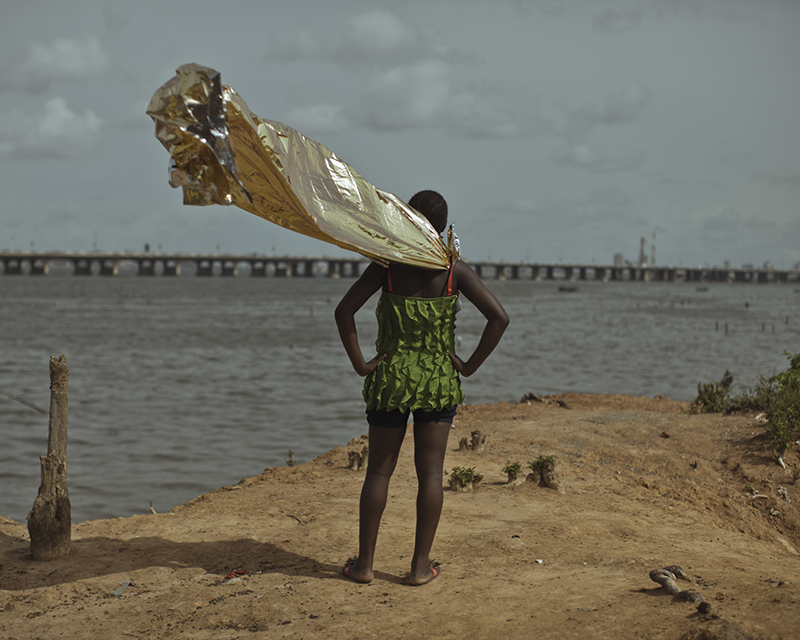Image above: © Cristina de Middel, Aworan / Courtesy of Dillon Gallery
Dillon Gallery is currently showing a selection of works from multiple photography projects by Cristina de Middel. “This is What Hatred Did” is one of de Middel’s latest series consisting of a re-enactment of a Nigerian book from the 1960s.
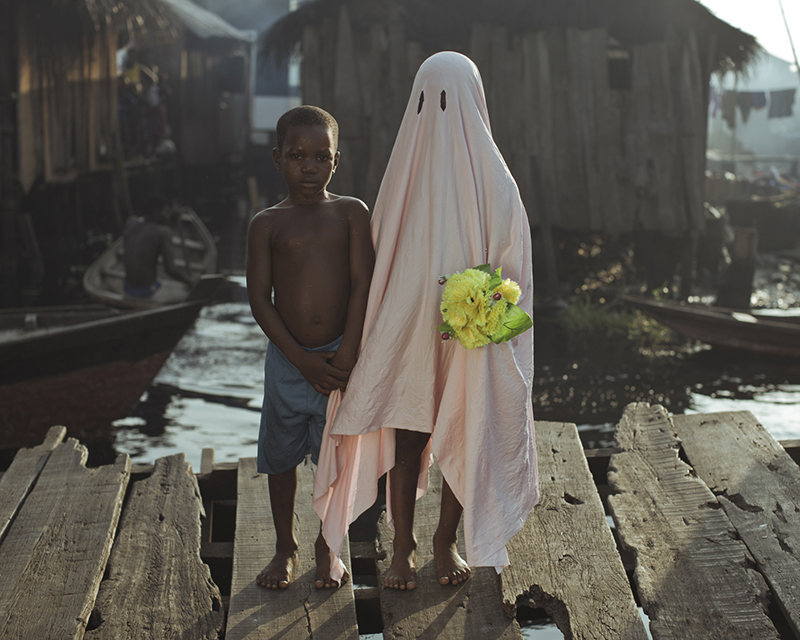
Image above: © Cristina de Middel, Lagogo / Courtesy of Dillon Gallery
Amos Tutuola wrote My Life In the Bush of Ghosts in 1964, a book that forced him to flee the country due to the violent reactions to the work, but that today is considered an important piece of contemporary African literature. The book is written from the perspective of a 5-year-old boy, whose village is attacked, forcing him to escape into the bush. In Yoruba culture, the bush is a place of magic and spirits where humans are not allowed. The story centers on the boy’s adventures in a mix of reality and fantasy. De Middel describes how she was captured by one of the last lines in the book: “this is what hatred did,” which gives an entirely new perspective to the 5-year-old’s fantastic adventures and puts the story in relation to the wars of religion during that time in Nigeria.
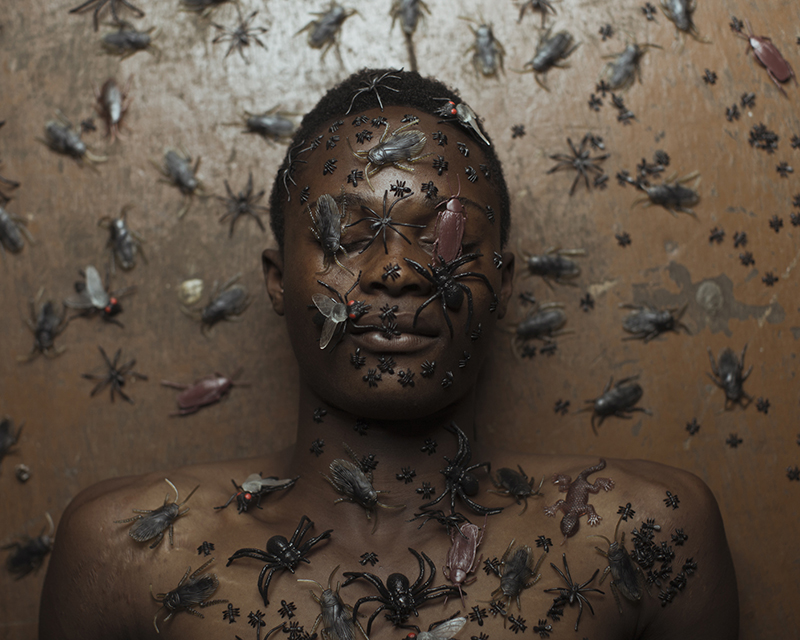
Image above: © Cristina de Middel, Sodomo / Courtesy of Dillon Gallery
De Middel travelled to Makoko, a slum neighborhood outside of Lagos to reenact specific scenes from Tutuola’s book. She describes how Makoko, as a Yoruba center and a place where not just anyone is allowed to enter, was important as a location for the project. Makoko has its own rules and is run by kings and community leaders. Most of its inhabitants are paperless and without citizenship. It is in short a kind of modern version of Tutuola’s bush of ghosts. By doing the reenactments in Makoko, de Middel is not just recreating the book but also telling a story of a contemporary Nigeria. She explains how this was the very reason why the king granted her access to the neighborhood in the first place; to show a side of the country different from the stereotypical description of Africa that the Western world is used to.
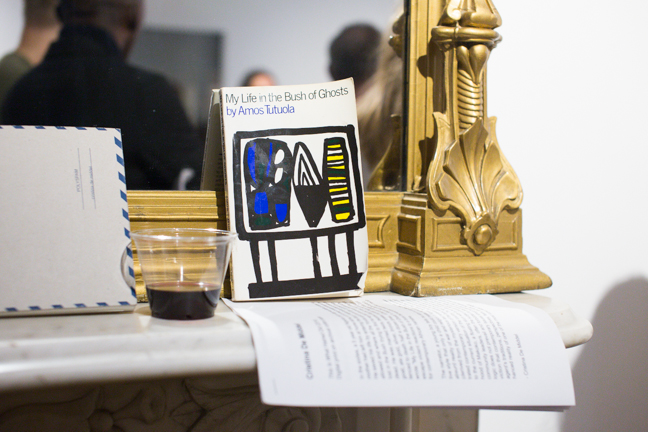 Image above: During the opening at Dillon Gallery © Paula Rey Jimenez
Image above: During the opening at Dillon Gallery © Paula Rey Jimenez
De Middel describes a very thought out process when she talks about her works. As she read the book she made sketches of the scenes that she was drawn to and when reenacting them with locals in Makoko, she shows the sketches to the “actors” and thereby avoided many of the language barriers.
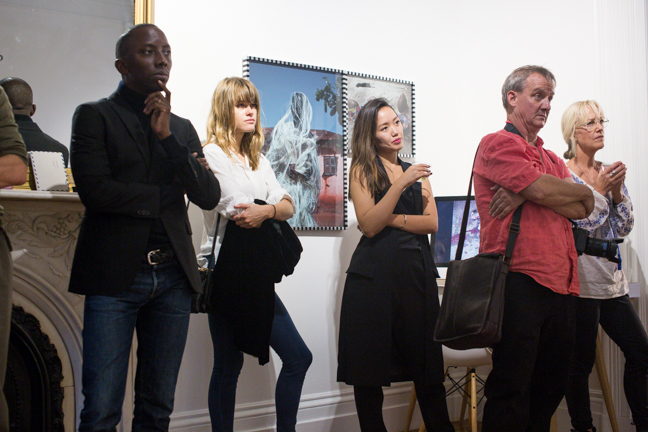
Image above: During the opening at Dillon Gallery © Paula Rey Jimenez
De Middel also has a detailed plan in mind when it comes to the use of the photographs. Everything from what photos to include in the book, which texts and excerpts to accompany the photos, as well as how the work should be hung in the gallery space is already planned by the artist.
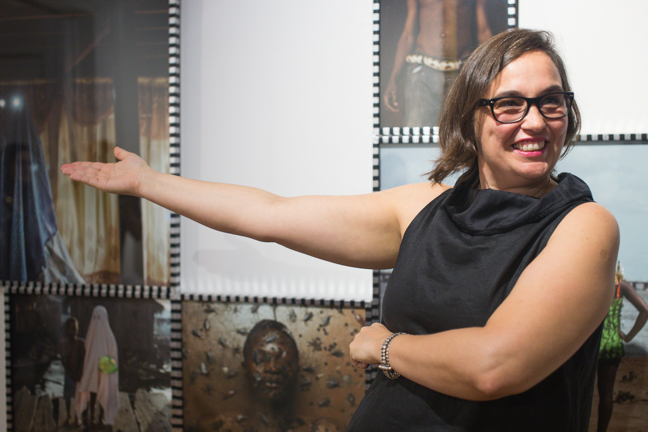
Image above: The artist during the opening at Dillon Gallery © Paula Rey Jimenez
De Middel explains how photos to her are like words; they need a sentence or order to make sense and be meaningful. This is definitely something that shines through when seeing her work and hearing her explain it. These photographs are both visually interesting, a magical recreation of Tutuola’s world, and a documentation of contemporary Nigeria.
Image above: © Cristina de Middel, Ijewo / Courtesy of Dillon Gallery
- Helena Calmfors


